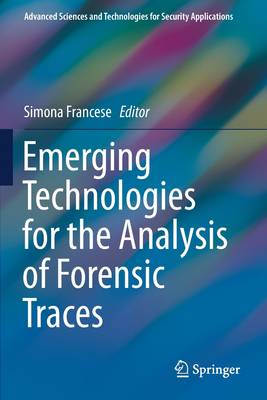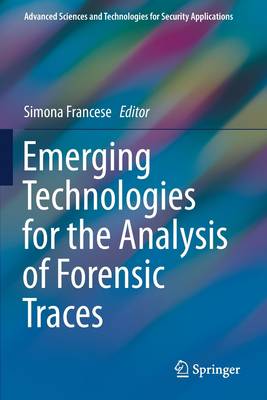
- Retrait gratuit dans votre magasin Club
- 7.000.000 titres dans notre catalogue
- Payer en toute sécurité
- Toujours un magasin près de chez vous
- Retrait gratuit dans votre magasin Club
- 7.000.0000 titres dans notre catalogue
- Payer en toute sécurité
- Toujours un magasin près de chez vous
Emerging Technologies for the Analysis of Forensic Traces
Description
This book provides a line of communication between academia and end users/practitioners to advance forensic science and boost its contribution to criminal investigations and court cases. By covering the state of the art of promising technologies for the analysis of trace evidence using a controlled vocabulary, this book targets the forensics community as well as, crucially, informing the end users on novel and potential forensic opportunities for the fight against crime.
By reporting end users commentaries at the end of each chapter, the relevant academic community is provided with clear indications on where to direct further technological developments in order to meet the law requirements for operational deployment, as well as the specific needs of the end users.
Promising chemistry based technologies and analytical techniques as well as techniques that have already shown to various degrees an operational character are covered. The majority of the techniques covered have imaging capabilities, that is the ability to visualize the distribution of the target molecules within the trace evidence recovered. This feature enhances intelligibility of the information making it also accessible to a lay audience such as that typically found with a court jury. Trace evidence discussed in this book include fingermarks, bodily fluids, hair, gunshot residues, soil, ink and questioned documents thus covering a wide range of possible evidence recovered at crime scenes.
Spécifications
Parties prenantes
- Editeur:
Contenu
- Nombre de pages :
- 275
- Langue:
- Anglais
- Collection :
Caractéristiques
- EAN:
- 9783030205447
- Date de parution :
- 15-10-20
- Format:
- Livre broché
- Format numérique:
- Trade paperback (VS)
- Dimensions :
- 156 mm x 234 mm
- Poids :
- 421 g

Les avis
Nous publions uniquement les avis qui respectent les conditions requises. Consultez nos conditions pour les avis.





